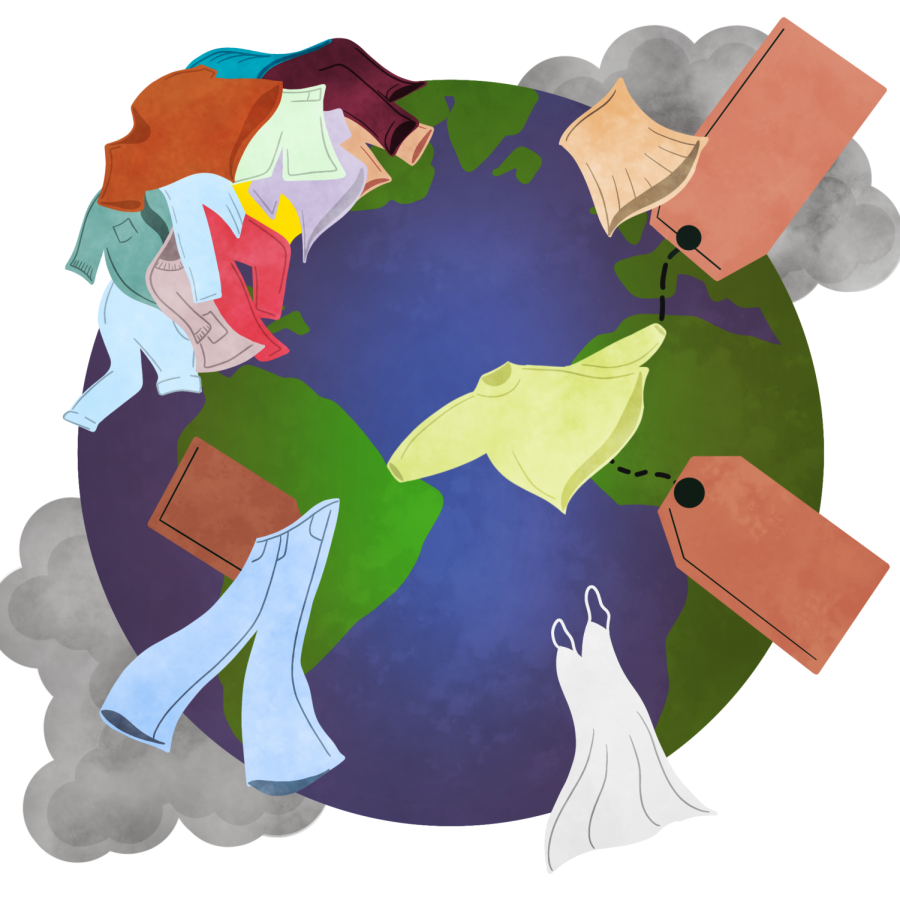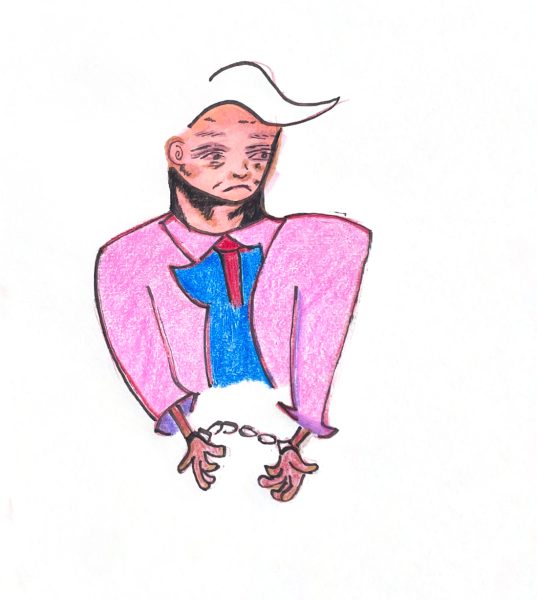Think twice before you buy
October 5, 2021
If you’re a regular user of TikTok, Twitter or Instagram, you’ve undoubtedly heard the term “fast fashion.” The term, first used by The New York Times in 1989, has been coined for streetwear brands that utilize hasty manufacturing and distribution methods to reduce the time it takes fashion trends to hit the racks. Sounds great, right? With brands like Shein, Zara and H&M, who offer all of the latest trends for dirt cheap, you’ll never be caught wearing last season’s prints. However, as cheap and trendy as fast fashion may be, severe social and environmental concerns lurk behind its smokescreen prices. It cuts ethical corners by exploiting cheap offshore labor and even cheaper non-biodegradable materials that have a lasting impact on the environment.
Fast fashion — and fashion in general — contributes to a significant amount of wastewater that is most often deadly to marine wildlife. One-tenth of the water used in factories and 20% of wastewater worldwide can be attributed to the fashion industry. To put this into perspective, just one ton of fabric can require up to 200 tons of water to produce. Furthermore, toxic wastewater and plastic microfibers from synthetic materials often end up in the oceans and ultimately in our food through washing machines, landfills and factories. Fast fashion brands often capitalize on offshore labor in countries with little to no environmental regulation, where the factories release dye and chemical polluted water into the ocean. This dye is highly toxic to marine wildlife and cannot be filtered out of the water.
Although the wastewater may have the most immediate and direct impact on the environment, the ecological repercussions of fast fashion don’t cease with production. Fast fashion brands contribute to the “throwaway culture” that has developed alongside the increasing popularity of mass production, originally made possible by the industrial revolution. This culture perpetuates the myth that clothes are not meant to be re-worn but rather replaced with each new fashion fad. This idea is not exclusive to fashion: throwaway culture can be applied to any subsection of consumerism. We are draining this planet of its resources and filling its vacancies with the remains — eventually, it will run out of both.
Alternatively, “slow fashion” typically spans a much longer time frame and pays less attention to fashion fads as they circulate. As the toll fast fashion has on the environment becomes more evident, many brands have started to reject it and what it represents. Although it has existed as long as fashion itself, slow fashion has turned into a movement that encompasses sustainable practices that avoid unnecessary production, promote local commerce and produce timeless, long-lasting styles. Although it may be more expensive, each piece is produced with high-quality and durable fabrics, fasteners and other materials that will look nicer and last much longer. After all, we all know that you usually get what you pay for when it comes to purchasing (new) clothing. Slow fashion symbolizes awareness of the past and consideration of the future: both of the planet and how the humans living on the planet will choose to express themselves. Patagonia, who shares that “everything [they] make has an impact on the environment,” was one of the earliest brands to fight for ethical fashion manufacturing. They advocate for sustainable and renewable fashion practices while actively working to reduce their own waste, byproducts, energy and water use. Additionally, Patagonia utilizes a social responsibility program to monitor the social impact of their commerce and work alongside various other programs to promote fair trade and living wages. When we uphold the role of the informed consumer and research the brands we support, we can look good while feeling good about where our money is going.
Nevertheless, fast fashion is not all evil, as it can provide lower-income individuals with access to affordable, fashionable clothing. It is not consumers such as these that uphold the dishonorable customs of fast fashion. The fashion industry has profited from offshore labor exploitation in countries where trade unions are banned and factory work is fed through generational poverty. These factory workers are often grossly underpaid and expected to work long hours in dangerous working conditions. Although it may seem as though individual efforts are insignificant, the choices that we make as consumers can be extremely powerful. Take personal responsibility for where your money is going and demand transparency from brands that attempt to persuade you otherwise. Our demands and desires fund all of capitalism — by acting as if we are powerless, we become powerless. It’s easy to pretend we don’t see what hides behind the flashy prices, but the cost is being paid for by someone, somewhere.












